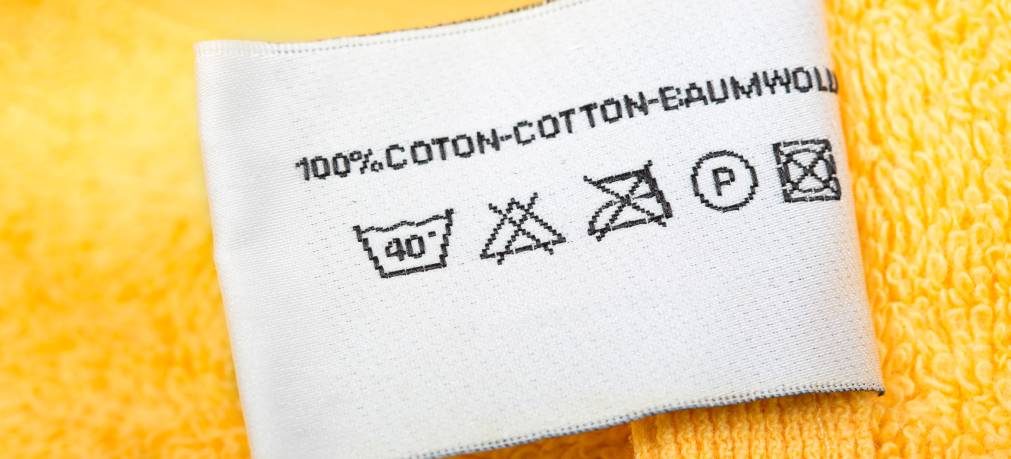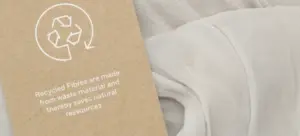Nowadays almost everyone is used to looking at the outer label of a garment and identifying certain information such as size or price. But labels include much more information, some of which is essential, for example, for the proper care, cleaning and conservation of the garment. If we do not know how to read and interpret clothing care labels correctly, the garment may not last beyond the first wash.
Why are clothing care labels important?
The information provided by a clothing label is much more comprehensive than we can imagine, as it includes, for example:
- Washing instructions, with detailed information on how to wash, dry and iron the garment correctly. This is essential to avoid damage, such as shrinkage, discolouration or deformation of the fabric, which can occur if the garment is washed incorrectly.
- Prolonging the life of the garment. Improper washing, such as washing in water that is too hot or in the wrong cycle of the washing machine, can cause the garment to wear out faster.
- Protecting delicate fabrics. Care labels provide guidance on how to properly treat delicate fabrics, such as silk or wool, to avoid damage.
- Avoiding allergies and skin problems. They may also include information about specific materials and components in the garment, which is crucial for people with allergies or skin sensitivities.
- Compliance with warranties. In some cases, following proper care instructions is necessary to maintain the validity of the garment’s warranty. If the garment is damaged due to mishandling that contradicts the instructions on the care label, the warranty may not apply.
Understanding the main symbols of laundry care
Surely at one time or another, if only out of curiosity, we have all taken a look at the symbols on clothing labels, but without further explanation, it is often difficult to interpret them correctly. What does these symbols mean?
- Washing symbols. It is represented by a tub or wash basin. The numbers, dots, lines and other symbols that accompany the basin indicate the precautions that we must take regarding the washing programme, such as temperature, spin… (in the image below we explain what each one means in detail).
- Bleaching symbols. There are symbols that indicate whether bleach can be used or not. For example, a solid triangle indicates that chlorine bleach can be used, while an empty triangle indicates that bleach should not be used.
- Drying symbols. They indicate whether the garment can be tumble dried, at what temperature and whether a gentle cycle is required.
- Ironing symbols. Indicate the maximum ironing temperature and whether steam is required.
- Dry cleaning symbols. Represented by a hand symbol in a bowl of water. Indicates that the garment should be washed by hand rather than in a washing machine.

Understanding the meaning of fabric composition labels
The labels also inform us of the composition of the garment, i.e. the fabric or blend used. The most common fabrics are:
Cotton
The garment is either pure cotton, or is a blend containing cotton. Care instructions may vary, but generally it can be machine washed in warm or cold water and tumble dried on low heat.
Wool
The garment is made of wool or a wool blend. Usually requires special care, such as hand washing in cold water and drying flat to prevent warping.
Silk
Silk garments are delicate and require special care. The label may indicate hand wash in cold water with mild detergents and air dry.
Polyester
Polyester is a durable synthetic fabric that can generally be machine washed in warm water and tumble dried on low heat.
Linen
Linen is a natural fabric that can crease easily and is therefore generally recommended to be hand washed or machine washed on a gentle cycle and air dried.
Nylon
Nylon is another synthetic fabric which is durable and easy to care for. It can usually be machine washed and tumble dried at a low temperature.
Some tips for the proper care of clothing
In addition to taking into account the information regarding the care and composition of the garment, there are some tips that will help us to keep it in good condition and prolong its useful life.
- Before washing, drying, ironing or cleaning a garment, read the labels carefully and follow the appropriate instructions according to the type of fabric.
- Separate clothes by colour and fabric type to avoid colour transfer during washing. Also, separate clothes according to fabric type and soiling degree to wash them with the right type of programme.
- Protect delicate items such as lingerie, underwear or items with sensitive details with laundry bags.
- In general, it is advisable to wash clothes in cold or lukewarm water to prevent colours from fading and to preserve the shape of the garments.
- Choose mild detergents specific to the type of fabric of your garments. Avoid excessive use of bleach as it can damage delicate fabrics.
- If possible, air dry clothes to avoid excessive tumble drying. For garments that can be tumble dried, use a gentle cycle and remove slightly damp garments to avoid creasing.
- Use the recommended ironing temperature for each type of fabric and, if necessary, use a damp cloth between the iron and the garment to protect delicate fabrics.
- Store clean, dry clothes in a cool, dark place to prevent discolouration and mildew. Use hangers for garments that can be hung and fold garments that can be stored in drawers properly.
If we follow the instructions on the label and take proper care of our clothes, they will last longer, which saves us money on wardrobe replacement, but also means that our clothes will look well cared for, with bright colours and without stains or wear and tear.
Another important aspect is that, by taking good care of clothes, we also reduce waste, i.e. the amount of clothes that end up in landfills. This contributes to environmental sustainability. On the other hand, the production of clothing requires a significant amount of natural resources, such as water, energy and raw materials. By reducing the frequency with which new clothes need to be purchased, the impact on these resources is reduced.



